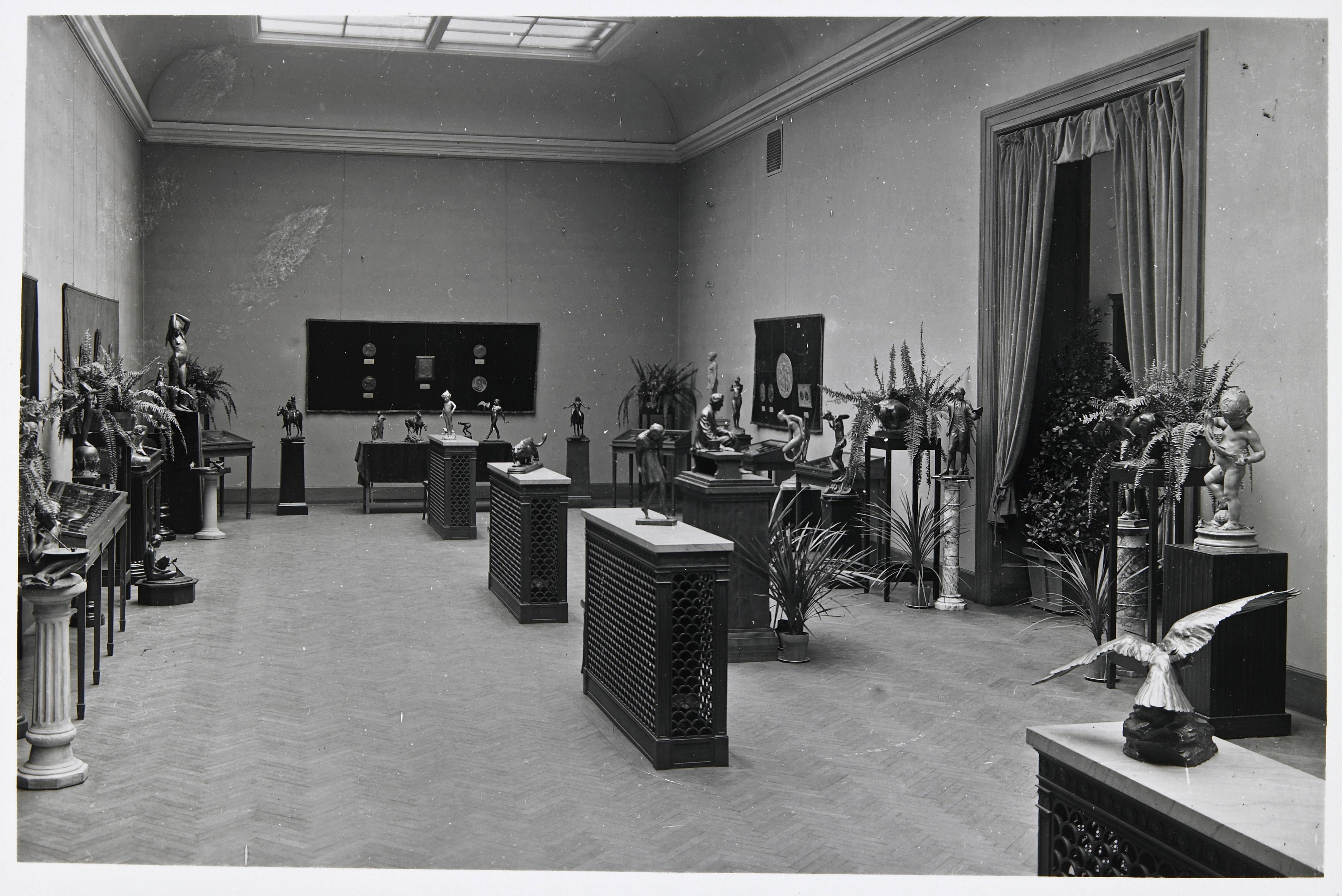This week, the Friends of the Institute will host the 33rd annual Art in Bloom festival at Mia. It may well be 75 degrees outside. But the first AIB, back in 1983, introduced flowers into the museum after a spate of particularly long, snowy winters at a time when winter was much colder and longer in Minnesota than it is now. More than a foot of snow fell in the Twin Cities on April 14.
Having plants in the galleries broke a taboo that still persists, for reasons of art conservation: humidity, bugs, detritus. But almost a century ago, plants were everywhere in the museum—they were a standard part of exhibition design.
The photo above was taken in 1933, around the time that the Friends raised funds to buy the walnut benches for the fountain court. It doesn’t appear to be a special occasion. Flowers often decorated the fountain. Indeed, the Friends likely had something to do with that—the fountain, which dates to the 1500s, was given to Mia in 1920 by Friends founder Ethel Morrison Van Derlip, whose father—Clinton Morrison—donated the land for the museum.
The photo at right shows the museum’s main exhibition space in 1919, with ferns and other greenery accenting an exhibition of bronze sculpture. When Mia unveiled its Titian painting, in 1925, it appears that the museum planted the picture, no pun intended, in the curtained niche to the right. Ferns had been a Victorian mania in Britain, from the 1850s until the turn of the century, a trend that may have trickled across the pond. Certainly it seems to have taken root in American art galleries, and American art museums—always looking over their shoulders at Europe—might have followed suit.
The fountain, in any case, remained a floral attraction for decades. The color photo at right shows it in 1954, decorated by the Friends for Easter.



